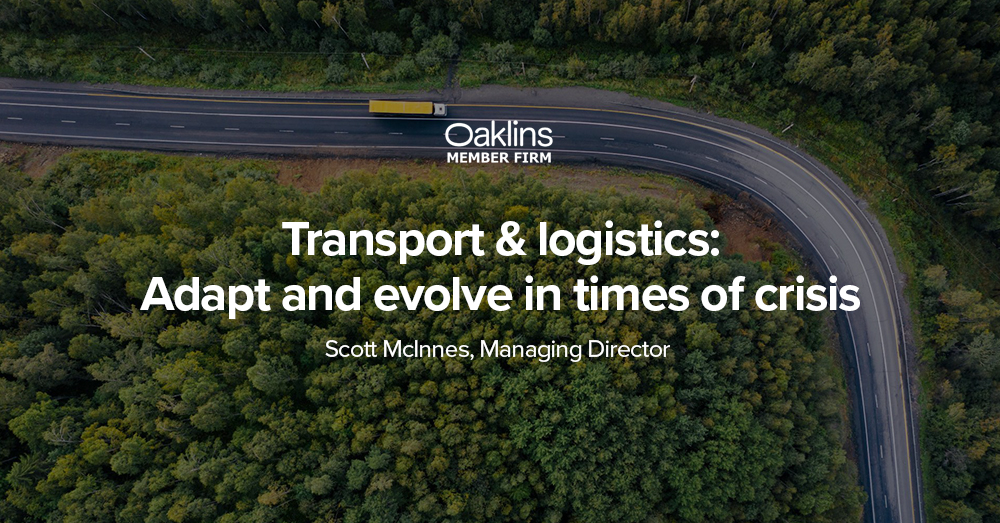Disruption and accelerated M&A opportunities for the Logistics in Australia

If there is anything we’ve discovered over the past few months it’s that life is uncertain and that we therefore need to be able to adapt and evolve. COVID-19 accelerated trends that were already present, put others on hold and shifted priorities. This impacts certain industries more than others, but it is very unlikely that things will ever completely go back to normal. Good or bad, hard to say, but we are all curious to know what the new normal may look like, how it will affect our businesses and our lives and so we’ve asked our experts to comment on the trends they see in certain industries.
Henslow Managing Director Scott McInnes was one of five Oaklin’s member firm specialists asked to comment on emerging trends likely to shape the transport and logistics M&A space.
The advent of COVID-19 has challenged and accelerated opportunities in the transport and logistics industry globally, and Australia is no exception. Thinking ahead for Australia, there are two key trends likely to shape M&A in the sector:
Market duopoly structure driving industry consolidation
Like many small, developed markets, Australian transport and logistics lends itself to monopoly characteristics, in this case, a duopoly between Toll Group and Linfox. These large logistics businesses can consistently out-invest smaller competitors in areas such as technology, IT, capital expenditure and human capital. However, customers are aware of this increasing concentration of market power and are actively supporting other logistics providers to drive competition.
Rise of e-commerce disrupting traditional logistics practices
In Australia, revenue in the e-commerce market is projected to reach US$32 billion (AU$47 billion) billion by 2024 (5.8% CAGR). COVID-19 is driving consumer behavior increasingly online and accelerating the shift to online fulfilment. Challenges to the industry include managing annual demand peaks and servicing consumer fulfilment expectations. Additionally, the opportunity of e-commerce is not evenly spread, as seen by Amazon’s recent proposal to construct a ‘mega’ Sydney warehouse to meet this surging demand.
What do these trends mean for M&A?
1.
Increasing drivers for consolidation in the market to achieve a ‘third-pillar’, creating the scale and capability to both invest and compete with the dominant players.
2.
Mid-tier players are likely to be on the lookout for acquisition opportunities to drive scale or become acquisition targets themselves. We’ve seen this reflected in transactions such as Chalmers sale to Qube Holdings and Anchorage Capital’s acquisition of AHG’s cold-chain logistics business.
3.
On a global scale, there’s scope for Australian logistics companies to explore international joint ventures and partnerships to smooth international commerce and better serve their customers.
Access the the full article including global trends here




